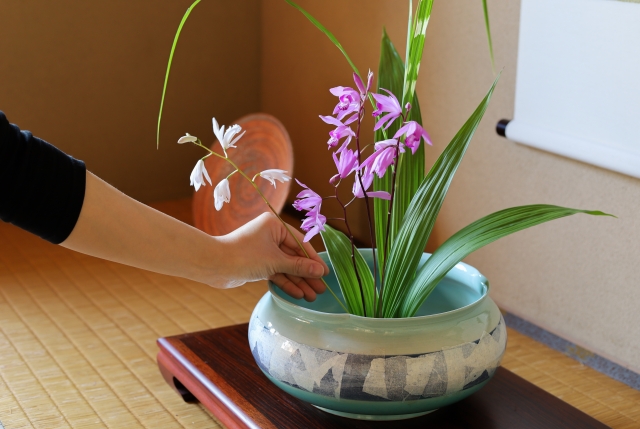Spring in Japan is a magical time when nature awakens with vibrant colors and delicate fragrances. From the iconic cherry blossoms to charming daffodils, Japanese spring flower arrangements capture the essence of this beautiful season.
This guide is here to help you create stunning spring arrangements that blend Japanese traditions with modern flair. Whether you’re a complete beginner or looking to add a Japanese touch to your floral designs, you’ll find everything you need to get started.
- What Makes Japanese Spring Flower Arrangements Special?
- Best Flowers for Spring Bouquets in Japan
- The 3:5-8 Rule in Japanese Floristry
- Simple Spring Flower Arrangements for Beginners
- Modern vs Traditional Spring Arrangements
- Spring Flower Arrangements for Different Occasions
- Large and Artificial Spring Flower Arrangements
- Seasonal Spring Flowers in Japan
- Summary
What Makes Japanese Spring Flower Arrangements Special?
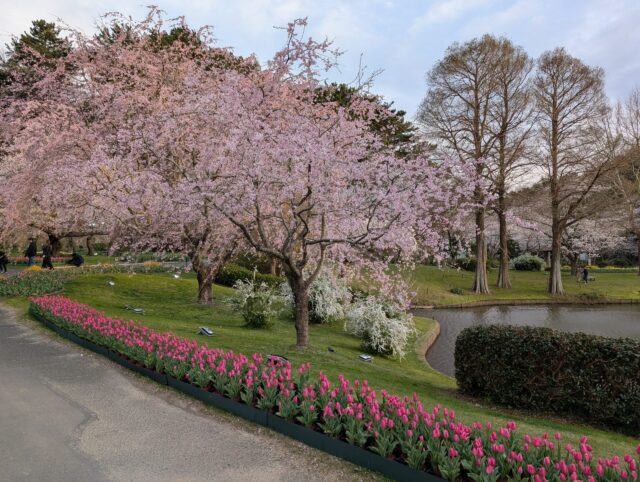
Japanese flower arrangements aren’t just about putting pretty flowers in a vase. They’re about creating harmony, balance, and meaning through each stem you place.
What sets Japanese arrangements apart:
- Asymmetry is key: Unlike Western styles that often favor symmetry, Japanese arrangements embrace natural, asymmetrical forms
- Less is more: Every flower and branch has purpose and meaning
- Space matters: Empty spaces (called “ma”) are just as important as the flowers themselves
- Connection to nature: Arrangements reflect the natural growth patterns of plants
- Seasonal awareness: Using flowers that are in season is fundamental
The beauty of Japanese arrangements lies in their simplicity and thoughtfulness. Each element tells a story about the season, creating a miniature landscape that brings nature indoors.
Best Flowers for Spring Bouquets in Japan
Sakura (Cherry Blossoms): The Star of Spring
Nothing says “spring in Japan” quite like cherry blossoms. These delicate pink flowers are the undisputed stars of the season, and for good reason:
- Symbolic meaning: Represent the fleeting nature of life and beauty
- Versatility: Can be used alone or combined with other spring flowers
- Branch appeal: Cherry blossom branches add height and drama to arrangements
Pro tip: If you can’t find fresh cherry blossoms, plum blossoms (ume) make a beautiful alternative that blooms even earlier in the season.
Classic Japanese Spring Flowers
Besides cherry blossoms, several other flowers make perfect additions to your spring arrangements:
- Peach blossoms (momo): Symbolize longevity and protection
- Camellia (tsubaki): Represent perfection and excellence
- Japanese iris (hanashobu): Symbolize good news and loyalty
- Wisteria (fuji): Represent love and sensitivity
- Azalea (tsutsuji): Symbolize patience and modesty
Modern Flowers That Blend with Japanese Style
You don’t have to stick to traditional Japanese flowers only. These international favorites work beautifully in Japanese-style arrangements:
- Tulips: Their clean lines complement Japanese minimalism
- Ranunculus: Add texture while maintaining elegance
- Sweet peas: Bring movement and fragrance
- Daffodils: Offer bright, cheerful colors
- Anemones: Provide bold focal points
The 3:5-8 Rule in Japanese Floristry
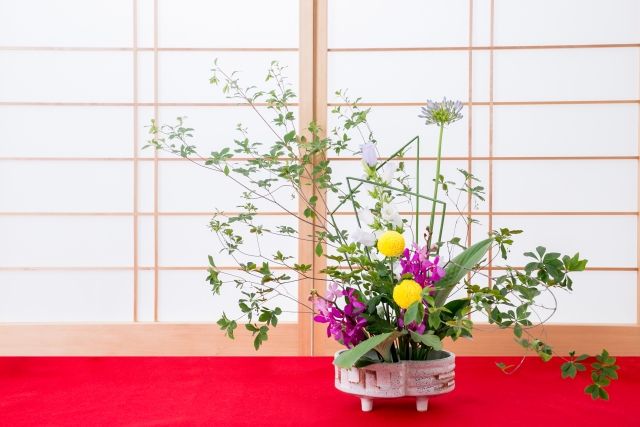
Understanding the Golden Ratio in Ikebana
The 3:5-8 rule is based on the golden ratio, creating naturally pleasing proportions in your arrangements. Here’s how it works:
- Shin (heaven): The tallest element, typically 1.5 times the container’s height
- Soe (human): The second element, about 2/3 the height of shin
- Hikae (earth): The shortest element, about 1/3 the height of shin
This creates a triangular shape that feels balanced yet dynamic.
How to Apply This Rule in Modern Arrangements
Don’t worry if math isn’t your strong suit! Here’s an easy way to apply this rule:
- Choose your container: Measure its height and width
- Select your main stem: Make it about 1.5 times taller than your container
- Add supporting elements: Each progressively shorter
- Check the overall shape: Should form an asymmetrical triangle
Remember: These are guidelines, not strict rules. Trust your eye and adjust as needed!
Simple Spring Flower Arrangements for Beginners
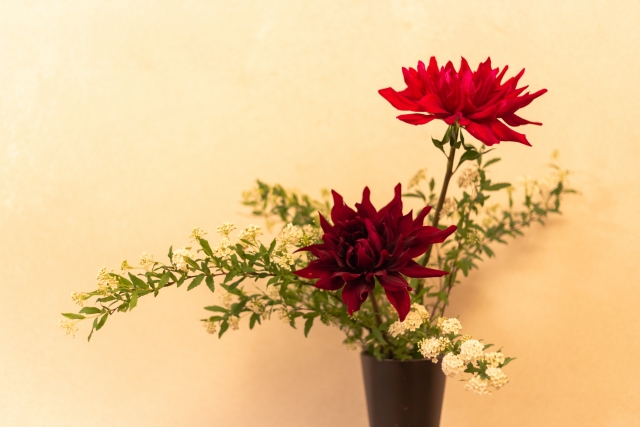
Easy 3-Step Japanese Style Arrangement
Creating your first Japanese-style arrangement doesn’t have to be intimidating. Follow these simple steps:
Step 1: Gather your materials
- One tall branch (cherry blossom or similar)
- 3-5 spring flowers
- A simple, low container
- Kenzan (flower frog) or floral foam
Step 2: Create the structure
- Place your tallest branch at a slight angle
- Add your second tallest element at a different angle
- Place the shortest flower near the base
Step 3: Fill in thoughtfully
- Add remaining flowers one at a time
- Consider each placement carefully
- Leave some empty space
That’s it! You’ve created your first Japanese-style arrangement.
Tools You Need to Get Started
Good news – you don’t need fancy equipment to begin:
| Essential Tools | Optional but Helpful |
|---|---|
| Sharp scissors or floral shears | Kenzan (flower frog) |
| Clean vase or container | Wire cutters |
| Fresh water | Floral tape |
| Paper towels | Pruning shears |
Modern vs Traditional Spring Arrangements
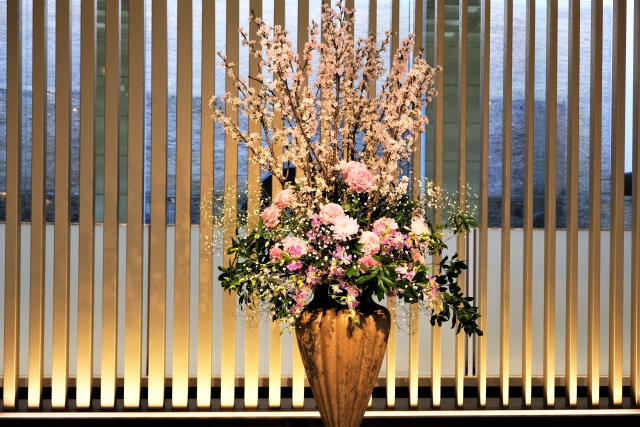
Contemporary Japanese Floral Design
Modern Japanese arrangements maintain traditional principles while embracing new ideas:
Traditional characteristics:
- Emphasis on line and form
- Minimal use of flowers
- Natural, asymmetrical designs
- Seasonal awareness
Modern twists:
- Bold color combinations
- Unconventional containers
- Mixed materials (flowers with non-floral elements)
- Larger scale arrangements
Mixing Tradition with Modern Aesthetics
Want to create something that honors tradition while feeling fresh? Try these ideas:
- Use traditional flowers in unexpected colors: Pink cherry blossoms with purple tulips
- Combine Eastern and Western flowers: Iris with roses
- Experiment with containers: Traditional flowers in modern geometric vases
- Play with scale: Oversized arrangements using traditional principles
Spring Flower Arrangements for Different Occasions
Spring Flower Arrangements for Church
Church arrangements often need to be visible from a distance. Here’s how to adapt Japanese style:
- Go vertical: Use tall branches to create height
- Keep it simple: Focus on one or two types of flowers
- Consider the setting: Choose colors that complement the church interior
- Add meaning: Select flowers with spiritual significance
Spring Flower Arrangements for Graves
Memorial arrangements in Japanese style honor loved ones with dignity:
- Choose lasting flowers: Chrysanthemums, carnations, or artificial options
- Keep designs low: Prevent arrangements from tipping over
- Use weather-resistant containers: Heavy bases work best
- Include evergreen elements: Symbolize eternal life
Table Centerpieces for Home
Create conversation-starting centerpieces that don’t block views:
- Keep it low: Maximum height should be 12-14 inches
- Use shallow containers: Wide, low bowls work beautifully
- Think 360 degrees: Design looks good from all angles
- Add seasonal touches: Include spring branches or moss
Large and Artificial Spring Flower Arrangements
When to Choose Artificial Flowers
Sometimes artificial flowers make more sense:
Perfect for:
- High-traffic areas
- Allergy sufferers
- Long-term displays
- Budget-conscious decorating
Look for:
- High-quality silk or fabric flowers
- Realistic colors and textures
- Flowers that match the season
Creating Impact with Large Arrangements
Big arrangements can be stunning when done right:
Key principles:
- Maintain proportions: Use the 3:5-8 rule on a larger scale
- Choose sturdy containers: Ensure stability
- Mix textures: Combine different flower sizes and shapes
- Consider placement: Make sure the arrangement fits the space
Pro tip: Start with a strong structural base using branches, then add flowers gradually.
Seasonal Spring Flowers in Japan
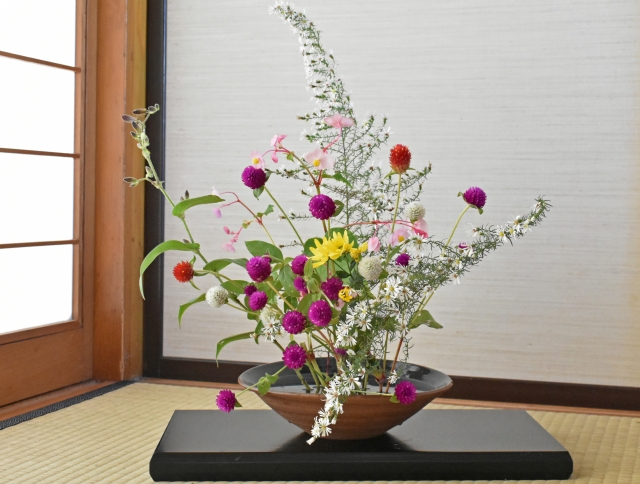
Early Spring Bloomers
The first signs of spring bring excitement:
- Plum blossoms (ume): February to early March
- Camellias (tsubaki): February to April
- Witch hazel (mansaku): February to March
- Japanese andromeda (asebi): March to April
Mid to Late Spring Favorites
As spring progresses, more flowers join the show:
- Cherry blossoms (sakura): Late March to early April
- Azaleas (tsutsuji): April to May
- Wisteria (fuji): Late April to May
- Peonies (botan): Late April to June
Regional Flower Variations
Japan’s diverse climate means flowering times vary by region:
| Region | Cherry Blossom Peak | Special Local Flowers |
|---|---|---|
| Okinawa | Late January | Hibiscus, Deigo |
| Tokyo | Late March | Somei Yoshino cherry |
| Tohoku | Mid-April | Mountain cherry |
| Hokkaido | Early May | Lilac, Moss phlox |
Summary
Japanese spring flower arrangements offer a wonderful way to bring the beauty of the season into your home. By understanding basic principles like the 3:5-8 rule and embracing simplicity, anyone can create stunning arrangements that capture the essence of spring in Japan.
Remember these key points:
- Less is more – every element should have purpose
- Embrace asymmetry and natural forms
- Use seasonal flowers whenever possible
- Don’t be afraid to mix traditional and modern elements
- Practice makes perfect – start simple and build your skills
Whether you’re arranging cherry blossoms for a special occasion or creating a simple spring centerpiece, the most important thing is to enjoy the process. Let nature inspire you, trust your instincts, and have fun creating your own Japanese-style spring arrangements!
【参考記事】Want to make your spring arrangements last longer? Check out our guide on keeping cut flowers fresh↓
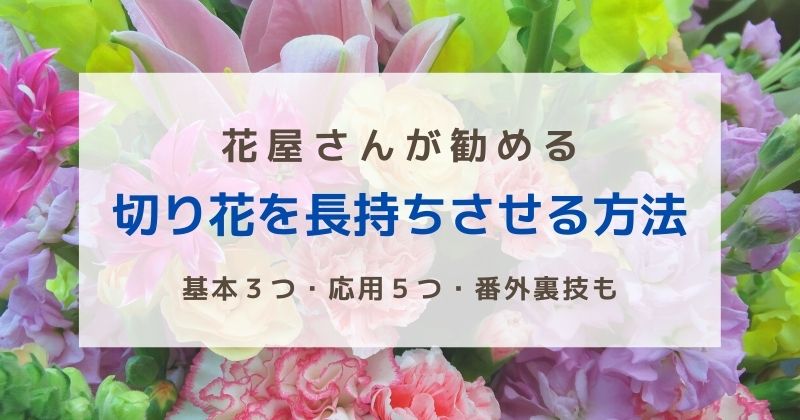
Now it’s your turn – grab some spring flowers and start arranging! With these tips and a bit of practice, you’ll be creating beautiful Japanese-inspired arrangements that bring the magic of spring into your space all season long.
